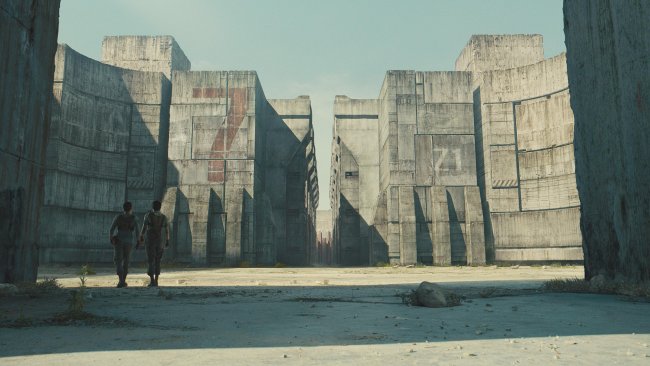
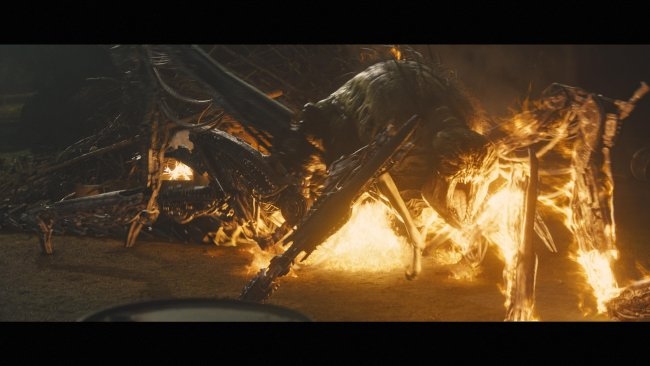 Griever, The Maze Runner
Griever, The Maze Runner
The latest young adult book series to hit the big screen ditches mundane romance in favour of dystopian grit and VFX-driven spectacle. Method Studios' Sue Rowe reveals how the studio helped construct the movie's breathtaking labyrinth.
Hollywood's love affair with teen fiction - ignited by the Twilight saga and further stoked by ongoing success with The Hunger Games - shows no sign of abating. The first of James Dashner's acclaimed Maze Runner books is the latest addition to the genre, and while it ticks all the necessary teen appeal boxes, it's one that pleasingly ploughs its own darker and more action-orientated furrow. Directed by Wes Ball, who makes his feature debut after finding acclaim with short-form film Ruin, the movie brings the titular maze and its deadly inhabitants to life with the help of veteran visual effects facility Method Studios.
All-Star Team
As lead vendor on the project, the studio created 530 shots for the movie (380 environment-based and 150 featuring creatures) with some 170 artists involved in total. "This project was perfect for our embryonic creature pipeline," says Sue Rowe, visual effects producer at Method Studios.
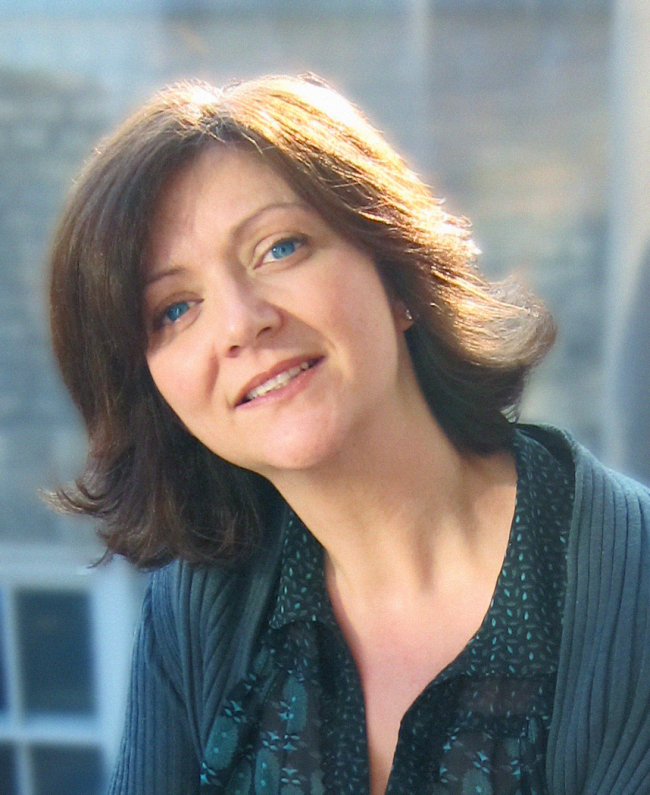 Susan Rowe, Method Studios
Susan Rowe, Method Studios
"We wanted a film to showcase what we were doing and Maze Runner fitted the bill perfectly. We also had a really good team from the kick-off. James Jacobs joined us from Weta and Eric de Boer came to us fresh from his Oscar win for Life of Pi. Eric Brevig, a hugely experienced VFX supervisor who did the original Total Recall and is also a movie director, also joined Method, bringing with him a wealth of experience and charisma. He was in Baton Rouge for the whole shoot while I travelled to and from the studio covering the digital builds. Eric and I previously worked together on John Carter so we have a history and a good shorthand."
Building the Maze
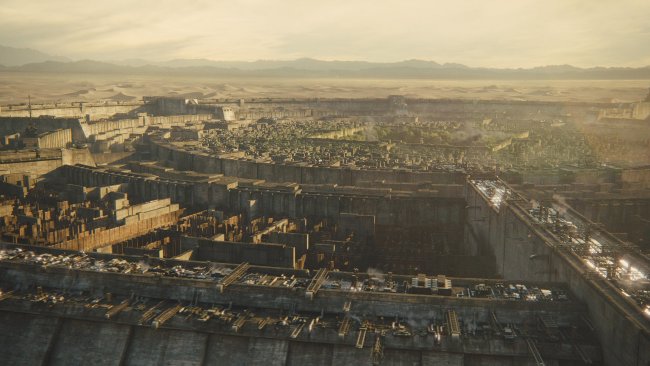 Out of the confines of the maze, with a city-wide view, courtesy of Method Studios.
Out of the confines of the maze, with a city-wide view, courtesy of Method Studios.
In terms of the environments for the project, the bulk of the work focused on building a convincing maze, one stretching 100 feet high. Rowe says the nature of its design meant they were able to simplify the process somewhat by building model pieces of wall and then repeating them randomly to create a huge environment. It was nevertheless a challenge to ensure the maze looked completely photoreal and convincingly weathered, with vegetation covering its walls.
"We were fortunate that set designer Marc Fisichella had built sections of the walls on set," she says. "These only went up 16-feet high, but they gave us a really good starting point. Though the walls had repetition in the modelling you couldn’t tell, as they were covered in wild growing ivy. That was a quite a deal, though."
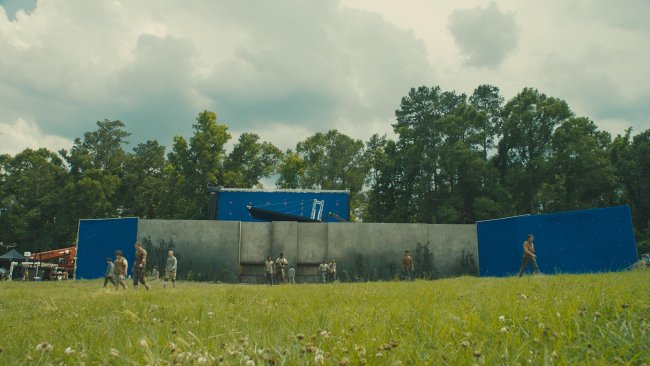
For many of the shots, Method Studios was able to reference 16-foot high prop walls (above), using these alongside extensive on-set reference to build and integrate its 100-foot tall versions (below).
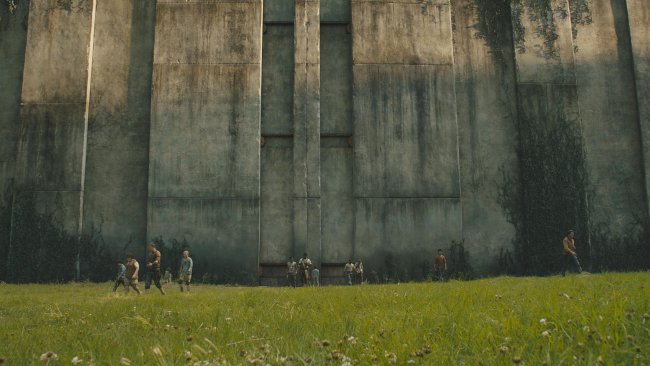
Some custom Houdini tools enabled the team to procedurally 'grow' the ivy in an organic way, so that each plant strand was completely unique. Vines could be interactively placed based on a number of 'seeds' selected for the vine to split into, while the tools ensured leaves would try to face the sun, conform the cracks in the walls, and move slightly in the breeze.
As well as helping to build the Maze, the Method team was also tasked with turning parts of it into a dangerous, moving puzzle. No stranger to visual effects work, director Wes Ball did previz for these sequences himself.
As the concrete slabs begin to move, they shake of layers of soil and dust and the concrete itself begins to break down. The effects team used Houdini's rigid body destruction solver for the concrete fragments, then added further layers of debris, and point particle sand and soil, along with multiple layers of volumetric dust created with the studio's in-house Studio Pyro toolset. While geometry was rendered with Maya and V-Ray, the particle and volumetric elements were fed-handled with Houdini's Mantra renderer.
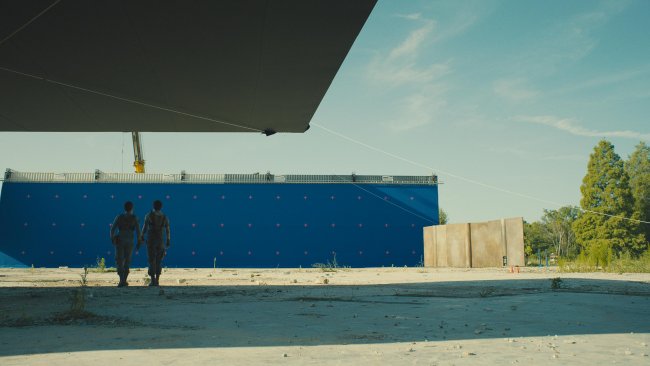
A look at original footage (above) and final still with the addition of a CG maze corridor, sky replacement and ground augmentation (below).
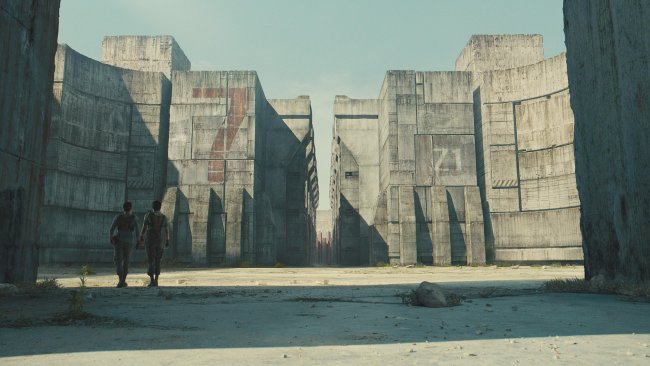
Imbuing the digital set extensions with the necessary sense of scale was crucial, says Rowe. "Without the right lighting they would easily look fake, but we found that using 'golden hour' lighting really helped. Low light raking across the surface of the wall allowed small-scale detail to be read on the surface. The doors to the maze open at dawn and at dusk, so we really enhanced these lighting scenarios to help us sell the scale."
To ensure seamless integration with the live plates, a team worked tirelessly on-set during principal photography to obtain all the necessary reference materials. "These teams of VFX data wranglers are real unsung heroes," says Rowe. "They work 12 hours on set, then go home and process all the data! On-set, silver and grey ball data are used to determine the position and intensity of lighting, plus we use high dynamic range photographs to extract scene information. LIDAR and total stations were also used here to obtain wire meshes of the real sets, which then helped with our CG builds in post-production."
Bringing the Grievers to Life
While the environment team was busily building the maze, another team of artists led by Eric de Boer began the difficult task of bringing the book's cybernetic foe, the Grievers, to life. "They lived and breathed Grievers," says Rowe. "One time Eric came in with photos of cranes and pneumatic drills he had seen on the building site outside the office. He had this idea that the legs would telescope and extend like a crane. It worked really well, allowing the leg span of the griever to change depending on the width of the Maze."
A Griever's combination of organic and mechanical elements makes it an especially interesting creation. In addition to studying animals such as ants, rats, fleas and even slugs, the Method team also looked closely at hydraulic machinery and pneumatic pumps. The result is a creature (or rather 12 different variations) that has a body with physically modelled skeleton, muscles and soft tissue, with eight mechanical legs brutally penetrating this organic form.
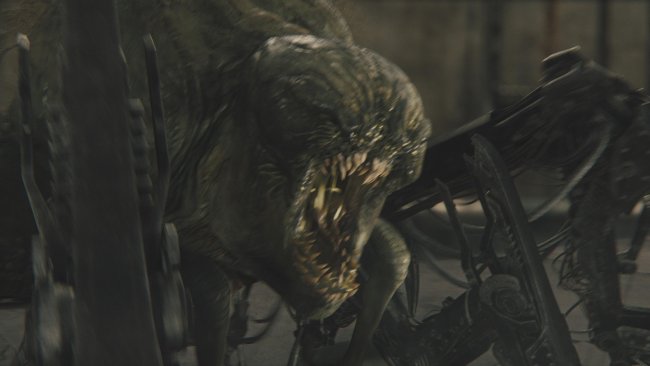
“We pretty much nailed the Grievers movement in the first few months, though after that there were changes to its head scale then its mouth,” says Rowe.
While Method Studios has previously focused more on environment and simulation-based effects work, this has worked to its advantage in that it's been able to build a completely new creature pipeline. "The extensive use of physical simulation in order to define the biomechanical nature of the Griever really puts Method in an elite club," says Rowe. "Creature supervisor James Jacobs and his team also wrote tools that deform the griever’s body in tune with the animation and speed of the character. It’s pretty technical stuff but that’s what takes Method out of the ordinary."
Interestingly, these tools included a bespoke muscle and tissue solver, utilising the Finite Element Method. Regarded as a more physically accurate and robust way to simulate material deformation and destruction, it's only started to gain a foothold in the VFX industry in the last couple of years, primarily for rigid rather than soft-body simulations (MPC notably utilised its in-house FEM tool Kali for the city destruction on Godzilla). "The griever's body is soft organic tissue, so our tool was used to solve elastic solids," explains Rowe. "It was used to do the final deformations and dynamic movements based on the animation, but in a smart way, which is good for us all as it saves time and allows us to concentrate on the visuals, rather than hand-animating secondary animation."
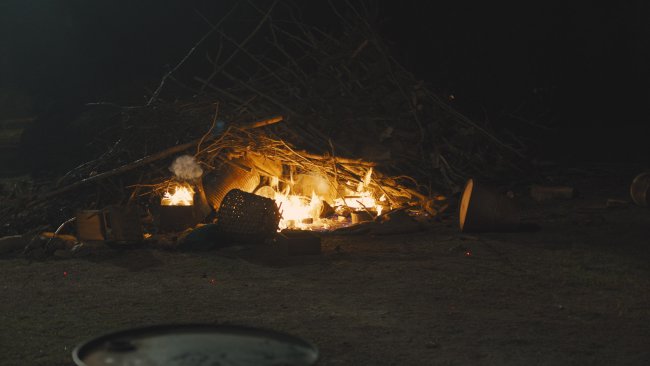
View of the original plate (above) and final still of a scene featuring a biomechanical Griever emerging from the flames (below). Note the seamless addition of digital fire elements.
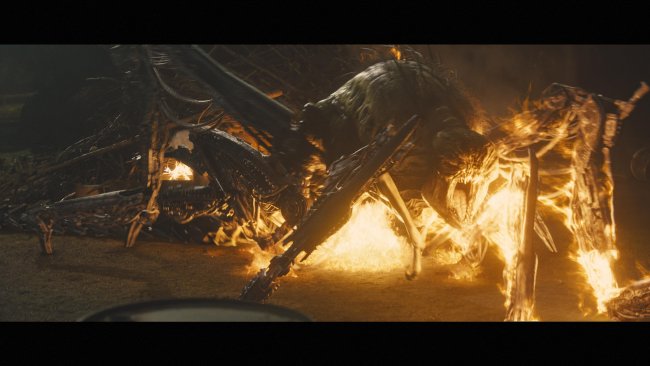
There's no official word yet on whether Method will be back for next year's Maze Runner sequel, The Scorch Trials, but in the meantime the studio is already busily putting its new pipeline to good use. "On the back of our work for Maze Runner, we were awarded 150 shots of really cool character animation for Night At The Museum 3," says Rowe. "It's going to excellent fun!"
Tags: Post & VFX


Comments